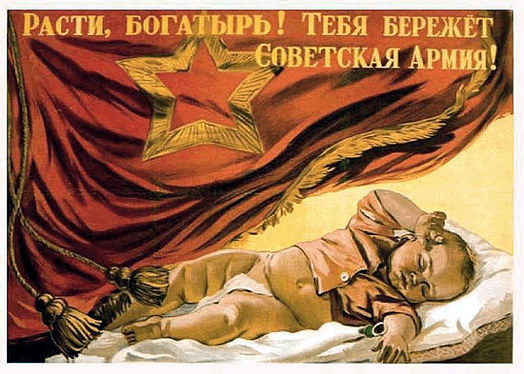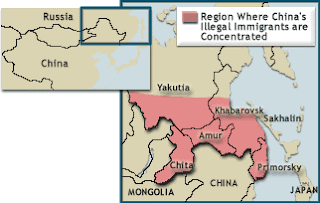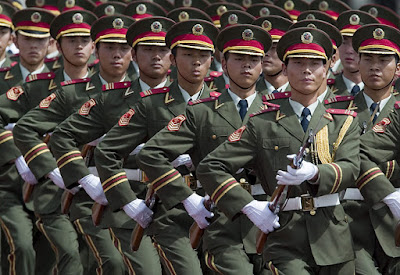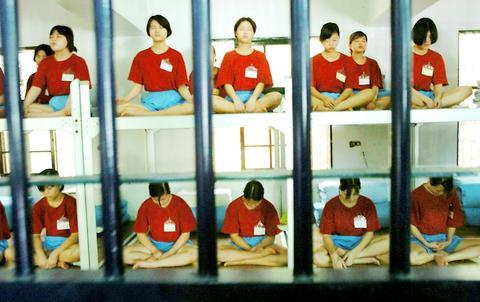Russia's population peaked in the early 1990s (at the time of the end of the Soviet Union) with about 148 million people in the country. Today, Russia's population is approximately 143 million.
Russia's population will decline from the current 143 million to a mere 111 million by 2050, a loss of more than 30 million people and a decrease of more than 20%.
The primary causes of Russia's population decrease and loss of about 700,000 to 800,000 citizens each year are a high death rate, low birth rate, high rate of abortions, and a low level of immigration.
High Death Rate
Russia has a very high death rate of 15 deaths per 1000 people per year. This is far higher than the world's average death rate of just under 9. The death rate in the U.S. is 8 per 1000 and for the United Kingdom it's 10 per 1000. Alcohol-related deaths in Russia are very high and alcohol-related emergencies represent the bulk of emergency room visits in the country.
With this high death rate, Russian life expectancy is low - the World Health Organization estimates the life expectancy of Russian men at 59 years while women's life expectancy is considerably better at 72 years. This difference is primarily a result of high rates of alcoholism among males.
Low Birth Rate
Understandably, due these high rates of alcoholism and economic hardship, women feel less than encouraged to have children in Russia.
Russia's total fertility rate is low at 1.3 births per woman. This number represents the number of children each Russian woman has during her lifetime. A replacement total fertility rate to maintain a stable population is 2.1 births per woman. Obviously, with such a low total fertility rate Russian women are contributing to a declining population.
The birth rate in the country is also quite low; the crude birth rate is 10 births per 1000 people. The world average is just over 20 per 1000 and in the U.S. the rate is 14 per 1000.
Abortion
During the Soviet era, abortion was quite common and was utilized as a method of birth control. That technique remains common and quite popular today, keeping the country's birth rate exceptionally low. According to a Russian news source, there are more abortions than births in Russia.The online news source mosnews.com reported that in 2004 1.6 million women had abortions in Russia while 1.5 million gave birth. In 2003, the BBC reported that Russia had, "13 terminations for every 10 live births."
Immigration
Additionally, immigration into Russia is low - immigrants are primarily a trickle of ethnic Russians moving out of former republics (but now independent countries) of the Soviet Union. Brain drain and emigration from Russia to Western Europe and other parts of the world is high as native Russians seek to better their economic situation.
Putin himself explored the issues surrounding the low birth rate during his speech, asking "What has prevented a young family, a young woman, from making this decision? The answers are obvious: low incomes, a lack of normal housing, doubts about the level of medical services and quality education. At times, there are doubts about the ability to provide enough food."
Russia is facing a demographic crisis so dire that its population could shrink by half within 50 years. The only obvious solution – to encourage youthful immigrants from overpopulated Asian neighbors such as China – is so politically sensitive that Russian leaders refuse to even discuss it.
Russia's challenge is a double whammy. Like most of the developed world, birthrates have fallen far below levels that would sustain the population. At the same time, Russian death rates, particularly among working-age males, have skyrocketed due to post-Soviet poverty, substance abuse, disease, stress and other ills.
Russia's population has fallen from 149 million a decade ago to just over 144 million today. Male life expectancy now stands at 59 years, with the average Russian woman living 72 years.Demographic experts say that the country is losing one million of its population annually, and the nosedive is accelerating.
"Whole regions of Siberia and the Russian far east are already depopulated, and new deserts are appearing even in former 'black earth' regions of central Russia," says Lev Gudkov, a demographer with the independent Russian Center for Public Opinion Research. "We will not be able to maintain our industry, agriculture or our armed forces."
Since the USSR's collapse, mortality rates among young males have risen to levels never before seen in peacetime. Mr. Gudkov predicts that there could be one pensioner for every worker in Russia within 20 years. "Not even a rich economy could survive that kind of strain," he says.
Russian women, who tend to be as well-educated and career-oriented as their Western counterparts, have been been having fewer children since the 1970s. Births now stand at 1.1 per woman, far short of the 2.4 babies each that would be needed to stabilize the population.
Russian nationalists have widely blamed the demographic crisis on women, and their proposed solutions boil down to removing them from the labor market and sending them home to have more children.
Most Western countries compensate for lower birthrates by permitting temporary and permanent forms of immigration, which provide both skilled and unskilled workers to keep economies growing and tax revenues flush.
But even after the fall of the Iron Curtain, Russia has resisted that solution."The only acceptable sources of immigrants for us are the Russian-speaking populations of former Soviet countries in the Commonwealth of Independent States," says Yevgeny Krasinyev, head of migration studies at the official Institute of Social and Economic Population Studies in Moscow.
The severity of Russia's population decline has been masked by an influx of mainly ethnic Russian immigrants from the former Soviet states of Central Asia, the Caucasus and the Baltics, but the flow from the CIS is slowing to a trickle. Alexander Belyakov, a pro-Kremlin parliamentarian and head of the Duma's Resources Committee, says: "We will encourage people to come from CIS countries, but Russia does not need any other immigrants."
Case Study: Pogran-Petrovka in Eastern Siberia
"They spread like jellyfish, penetrating everywhere - and gradually you find that without a shot being fired, they've simply taken over." The grey-bearded Cossack in his 19th-century military uniform - tight khaki tunic, blue trousers with yellow stripe - gestured up into the thickly wooded hills behind us. Nothing moved. But over the top of the ridge lay the country Vladimir Pozhidayev was referring to: China, which is flexing its economic muscle in the Russian Far East and which locals fear may soon stage a demographic takeover too.
Mr Pozhidayev, 58, lives in the village of Pogran-Petrovka. It is the first in what the authorities intend to be a chain of half-agricultural, half-military settlements guarding the long, winding frontier between China and Russia's maritime territory, nearly 6,000 miles from Moscow. Cossacks spearheaded Russia's conquest of Siberia and the northern Pacific coast in Tsarist times. Now the authoritarian regional governor, Yevgeny Nazdratenko, is encouraging them to return to their old role as an elite military caste, helping to protect the fringes of empire from hostile incursion.
At Pogran-Petrovka, they have been given an abandoned army base, a series of crumbling concrete barracks in the wilderness. Their job is to mount joint patrols with regular border troops and establish a self-sufficient community to be part of a human shield against China.
So far, the settlement consists of two families, half-a-dozen single men, a few turkeys and a large pig, and Mr Pozhidayev's only confrontations have been with Chinese poachers. They slip over the border in search of bears and tigers - now extinct in China itself - whose parts are prized for use in medicines and aphrodisiacs. Ginseng roots, frogs and jellyfish are also disappearing from the untamed forests and coasts of the Russian Far East. They end up, at exorbitant prices, in restaurants and pharmacies south of the border.
Mr Pozhidayev, a former sable hunter, and his comrades have plans to bring 60 families to Pogran-Petrovka. Their main task, they believe, will be to stop illegal immigrants; almost everyone in the maritime territory is convinced that the Chinese want more living space. In the whole of the Russian Far East, they point out, there are fewer than 10 million souls scattered across thousands of square miles. Just over the border, in the three northernmost provinces of China, there are at least 250 million.
Before the collapse of the Soviet Union, the 2,400-mile border with China was tightly sealed, a legacy of the bitter feud between the two Communist giants in the 1960s and 70s. The capital of the region, the great Pacific port and naval base of Vladivostok, was a completely closed city. Even Russians from other parts of the country needed special permission to visit.
Nowadays, Chinese is spoken everywhere in Vladivostok. In the past 10 years, traders from across the border have poured in, finding an eager market for the cheap consumer goods that Russian industry has never been able to supply. At Ussuriisk, an hour's drive from the regional capital, the "Chinese bazaar" is more like a separate town. The market is so busy it stays open all night. There are 2,000 traders living semi-permanently in metal freight containers above their stalls of fake designer-label trainers and anoraks. They have their own restaurants, a sauna - even a casino.
Families in the region, where an average salary can be as low as £30 a month, wear nothing but Chinese clothes. In Vladivostok, hotels depend heavily on tourists from over the border, and the new Chinese restaurants do good business. Yet almost no one has a good word for the Chinese. "They behave as though they own the town," said Irina Gimilshtein, a tour guide. "If Russia is not strong, there is a threat that we will lose this territory."
In fact, the present-day maritime territory was largely uninhabited when the Russians arrived. China makes no official claim to the area, and the head of China's parliament, Li Peng, has been welcomed in Vladivostok by Governor Nazdratenko. Official estimates of the number of Chinese settling illegally in the region every year are as low as 3,000 to 4,000, yet it plainly suits the authorities' purposes to pander to local paranoia.
Mr Nazdratenko has made a point of travelling to one of the few tiny pockets of disputed territory along the border, vowing to defend it with his own breast. Newspapers, in a region where the media is tightly controlled, revel in headlines such as "Conquistadors from the Heavenly Kingdom". And Sergei Pushkaryov, head of the federal migration service in Vladivostok, points to a map of border control points and says firmly: "It's us or them."
Mr Pushkaryov's great-grandparents were among the pioneers who helped to settle the maritime territory in the early 1900s. In those days, peasants were given grants of farming land. Now, in an attempt to bolster the Russian population, Mr Pushkaryov wants to revive the scheme in a different form, offering subsidies to families prepared to start a new life in the Far East. He admits, though, that it will be difficult to attract newcomers to a region where whole towns are often deprived of hot water and heating in winter because of the authorities' huge debts to the local energy company.
Apart from visiting American sailors, and the fact that almost all cars are second-hand Japanese imports, built to drive on the left, there is not much cosmopolitan about Vladivostok. But the local planning chief, Svetlana Parinova, doesn't see a problem. "Investors want quick returns," she says. "We need help for basic industries. The idea that we might receive more from across the Pacific than we can from Moscow - I doubt that very much."
Mrs Parinova admits that just a few hours down the road, on the Chinese side of the border, former villages have been transformed into towns of gleaming skyscrapers, while the Russian Far East remains as poor and miserable as it ever was. But she can see no way of sharing in the boom other than becoming part of China, which she naturally rejects. "One day," she says, "we'll build a paradise here too. But it'll be on our own terms." It is a sentiment any patriotic Cossack would heartily agree with.
Conclusion
Experts say that Russia not only has no immigration strategy, it has no effective laws to govern the issue at all. "There are only prohibitions," says Viktor Voronkov, director of the St. Petersburg Center for Independent Social Research. "This guarantees that most immigration remains illegal, a boon to only the black market and the criminalized part of society." Tens of thousands of migrant construction workers, from Ukraine, Moldova, and other CIS countries fuel a growing housing boom on Moscow's outskirts, yet few have legal status in Russia or pay any taxes.
Mr. Vorontkov says the main obstacle to rational immigration guidelines is a deep fear of being overwhelmed by outsiders. "Xenophobia remains very strong, not only in the Russian street but at the highest levels of officialdom as well," he says. Most feared of all is China, sparsely populated Siberia's teeming neighbor. Experts say there are already as many as 200,000 Chinese living and working in Russia, mostly in trade and small manufacture.
Even among the most open-minded Russian experts, the idea of inviting Chinese workers to till Siberia's abandoned farmlands or lend their entrepreneurial skills to Russia's depressed cities seems dangerous. "The situation on the Chinese border is already out-of-control due to illegal immigration. Russia needs to protect itself," says Mr. Krasinyev. "Letting Chinese workers come in large numbers looks like a solution, but is it really?" says Vladimir Iontsev, a Moscow professor of demography. "You have to ask yourself, would Russia still be Russia?"
Further Reference:











